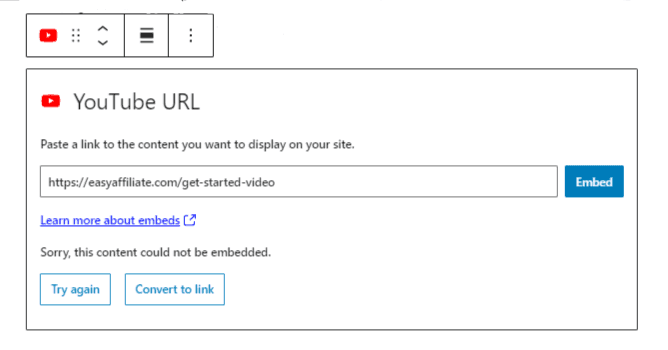Table of Contents
There are numerous ways to promote your content online. In particular, video marketing is becoming increasingly popular. However, the idea of developing videos from scratch can be daunting for small business owners, largely due to the perceived costs.
Fortunately, while all marketing methods will require some level of investment, there are plenty of affordable ways to produce high-quality videos. In order to yield the best results, you’ll need to create a clearly-defined plan of action.
In this post, we’ll explain why video marketing can be particularly effective for small businesses. We’ll also explore the process for creating your own marketing videos, and sharing them on your WordPress site. Let’s get started!
The Benefits of Video Marketing for Small Businesses
A thriving digital landscape means the available options for marketing your content grow each day. While social media reigns supreme, there has also been a rise in the amount of video content created for promotional purposes.
In fact, research by Cisco suggests that more than 80% of all Internet traffic will be video-based by 2021. Creating video content enables you to take advantage of that trend, and reach a much wider audience.
It also offers a more visual approach to marketing – something that's proving particularly popular among consumers. Embedding videos on landing pages has been shown to improve conversion rates by up to 80%, for example, and simply adding a video thumbnail to an email can increase click-through rates by between 20% and 40%.
This makes video marketing a smart way to increase sales of a particular product or service, or drive traffic to your site. Fortunately, this technique can be easily slotted into your existing marketing campaigns. Most social media sites support video content, and it’s easily embedded into platforms such as WordPress.
How to Get Started With Video Marketing (In 4 Steps)
Effective video marketing takes some work, but it is achievable, no matter the size of your business. To maximize your results, there are a few things you’ll need to consider before getting started. Let's walk through that process now.
Step 1: Establish the Purpose of Your Campaign
Before you go any further, you’ll need to establish why you’re creating a video marketing campaign. A clear idea of what you want to achieve will help you make important choices – both about the content itself and the ways in which you'll share it further down the line.
A defined purpose will also ensure that every member of your team is on the same page. Crafting a video can take a lot of work, so it’s likely to be a collaborative project. Therefore, you'll want to be sure that anyone who comes into contact with it knows what your final goal is.
To do that, you can begin by asking yourself several questions:
- Who’s your target audience?
- What buyer persona are you targeting?
- Are you looking to increase brand awareness? Sell more event tickets? Launch a new product? Or something else entirely?
Taking the time to answer these questions will ensure that every decision you make during the creation process supports your video’s overall purpose. It will also give you a better idea of the actions you’d like your audience to complete after watching it.
Step 2: Assign a Reasonable Budget to Your Campaign
Although it’s a common misconception that video marketing is highly expensive, some level of investment will be required to make it a success. Most importantly, you'll need to decide what equipment will be required.
High-quality content performs best, so you may wish to purchase a suitable camera. The cost of lighting, sound equipment, and editing software will need to be taken into consideration as well.
Of course, you could also film your videos using a smartphone. Recent releases of the most popular models include increasingly high-quality cameras, so this can be a viable option. You'll still want to purchase a microphone, however, as most cell phone audio isn't up to the task.
Step 3: Create Content With Your Audience in Mind
To create an effective video campaign, you’ll need to keep the interests of your audience in mind. If you can't engage them, your video simply won’t be a success.
At the same time, remember that your marketing videos don’t have to be overly salesy. There are numerous ways you can encourage users to engage with your brand. Here are a few examples:
- How-to videos. This kind of video teaches your audience how to perform a specific task. How-to videos are a perfect way to attract attention towards particular products or services.
- Brand videos. These videos offer a behind-the-scenes view of how your business operates, or the key values you hold. They can also be used as part of a larger marketing campaign.
Creating video content that provides real value to your audience is more likely to grab their attention. In fact, studies have shown that 93% of companies see an increase in conversion rates when they take a more tailored approach to marketing.
Step 4: Share Your Video on Your Website
Finally, you’ll need to decide on a video hosting platform. Uploading your video to one of these helps you easily share it, and embed it on your WordPress site. There are many available options, although YouTube and Vimeo are particularly popular.
Fortunately, the introduction of the Block Editor to WordPress has made embedding a video from any of the top video hosting sites incredibly simple. To begin, copy the URL of your chosen video.
Next, open the WordPress post or page where you want to add the video. Select the content area, and paste in your copied URL:

As soon as you do this, WordPress will fetch the embed code attached to your video and display it. Then, you can publish the post to add it to your site. Your carefully-crafted video can now be viewed by anyone who visits that page.
Conclusion
When done effectively, video marketing can be an excellent way to promote your business and boost brand awareness. It’s also a method for better serving the needs and interests of your chosen target market, and delivering content you know they will engage with.
In this post, we explored the four steps you’ll need to follow, in order to get started with video marketing:
- Establish the purpose of your marketing campaign, and create realistic goals.
- Assign a viable budget to the video production process.
- Determine the needs of your audience to craft successful content.
- Embed the video on your WordPress site.
Do you have any further questions about video marketing? Let us know in the comments section below!
If you liked this post, be sure to follow us on Twitter, Facebook, and LinkedIn! And don't forget to subscribe in the box below.



Leave a Reply